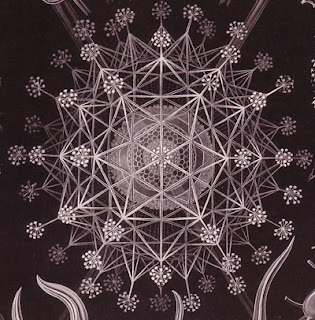Photosynthesis is one of nature´s most efficient way of producing energy and is almost as old as the planet itself. But until the early 90s, it was not paid much attention to in ways of producing electricity. Swiss scientists Michael Grätzel and Brian O´Reagan of École Polytechnique Fédéral de Lausanne found a way to transform light into electricity just as a plant does.
In 2010, Michael Grätzel won the Millenium Technology Prize for this invention.
Grätzel Cells are relatively easy in production: any dye is put on an electroconductive glass panel covered with nanoparticles. Then a second glass panel is covered with some graphite (this even works with pencil), that acts as a conduction multiplier. Plus some iodine solution, put under a lamp, this contruct will transform light into electrity. It is really as easy as this, but it took the scientists years of hard work.
The cells are bendable and 50% cheaper in production compared to common solar cells.
Commercial applications of Grätzel cells are under way and will contribute to the Europe´s energy supply by 5% in 2020, according to the European Union Photovoltaic Roadmap, as part as 12% of photovoltaic based energy sources in general.
November 26, 2010
November 25, 2010
Ernst Haeckel: 19th century genius
Ernst Haeckel was a 19th century biologist, naturalist, philosopher, physician, professor and artist who discovered, described and named thousands of new species.
His drawings are unbelievably detailled, colorful and diverse. There are tons of different radiolaria drawings, for example. Radiolaria appear in the oceans as little animalcules, mainly consisting of Silicon Dioxide skeletons. They are so amazingly diverse but still always perfectly symmetrical. Architect Sir Buckminster Fuller took great inspirations of organic forms, they appear to have contributed to some of his most famous buildings.
A little example of his amazing work can be seen in the film Proteus:
Swedish Tree House Hotel
Sweden´s first tree house hotel opened in this year´s july in Harads, 60km south of the polar circle. Mirrored walls protect guests from curious views. Its edge length is 4 meters to accomodate up to 2 people.
You won´t believe me, but there is even a sauna in the house! It´s therefore also the first sauna in a tree. The heating is done by a floor heating, so you´ll never get cold in frosty swedish winters.
According to the architects, more tree hotels will follow. Have a look on their website for more pictures of impressive tree houses!
You won´t believe me, but there is even a sauna in the house! It´s therefore also the first sauna in a tree. The heating is done by a floor heating, so you´ll never get cold in frosty swedish winters.
According to the architects, more tree hotels will follow. Have a look on their website for more pictures of impressive tree houses!
The 10 Principles of Deep Ecology
Norwegian philosopher Arne Næss defined a new understanding of the term "ecology" to give it a theoretical foundation. This happened in 1973 already. He believed that ecology cannot only be understood by logical and scientific arguments but that it needs an "ecological wisdom". Deep Ecology is a combination of emotion and intellect.
He created 10 principles to explain the needed steps for humankind:
- The well-being and flourishing of human and nonhuman life on Earth have value in themselves (synonyms: intrinsic value, inherent value). These values are independent of the usefulness of the nonhuman world for human purposes.
- Richness and diversity of life forms contribute to the realization of these values and are also values in themselves.
- Humans have no right to reduce this richness and diversity except to satisfy vital human needs.
- The flourishing of human life and cultures is compatible with a substantial decrease of the human population. The flourishing of nonhuman life requires such a decrease.
- Present human interference with the nonhuman world is excessive, and the situation is rapidly worsening.
- Policies must therefore be changed. These policies affect basic economic, technological, and ideological structures. The resulting state of affairs will be deeply different from the present.
- The ideological change is mainly that of appreciating life quality (dwelling in situations of inherent value) rather than adhering to an increasingly higher standard of living. There will be a profound awareness of the difference between big and great.
- Those who subscribe to the foregoing points have an obligation directly or indirectly to try to implement the necessary changes.
German Podcast about deep ecology (Tiefenökologie):
http://cdn-storage.br.de/mir-live/podcast-migration/audio/podcast/import/2008_07/2008_07_29_17_20_54_podcast_radiowissen_tiefenoeko_a.mp3
November 24, 2010
Floating Gardens by Anne Holtrop
Dutch architect Anne Holtrop worked together with Patrick Blanc (Vertical Gardens: http://www.verticalgardenpatrickblanc.com/) and Studio Noach on new structures, gardens that float!
The project is called "Spa Wellness Amsterdam".
"Here’s some info from Holtrop:
floating gardens / Spa Wellness Amsterdam
If architecture is a landscape full of non-coherent but co-existing elements. A landscape where different uses, social relations, spatial organizations and political viewpoints can co-exist simultaneously. If this situation is being emphasized, rather than straighten out, new possibilities can emerge that would otherwise never be found." (by dezeen.com)
November 23, 2010
Origami + Nature - inspired work by Richard Sweeney
Subscribe to:
Comments (Atom)




















